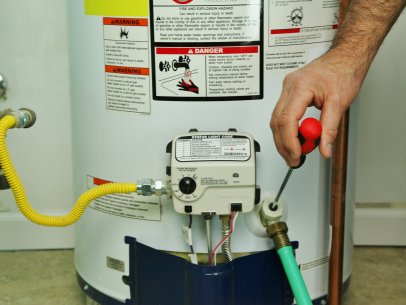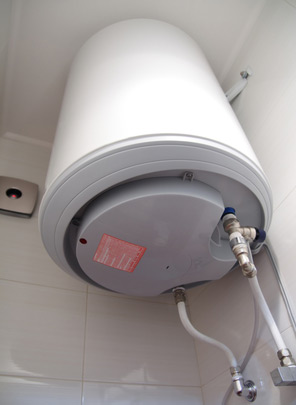Professional Tips for Maintaining Your Home's Hot Water System
Professional Tips for Maintaining Your Home's Hot Water System
Blog Article
How do you feel when it comes to What Kind of Maintenance Do Water Heaters Need??

Hot water is essential for everyday convenience, whether it's for a rejuvenating shower or washing recipes. To ensure your warm water system runs efficiently and lasts longer, normal maintenance is crucial. This post provides functional tips and insights on just how to maintain your home's hot water system to stay clear of disruptions and pricey repair services.
Introduction
Preserving your home's warm water system might seem complicated, but with a couple of easy steps, you can guarantee it operates efficiently for years to come. This guide covers every little thing from recognizing your hot water system to do it yourself maintenance tips and understanding when to contact specialist assistance.
Relevance of Maintaining Your Hot Water System
Regular maintenance not only prolongs the life-span of your warm water system but also ensures it runs efficiently. Overlooking maintenance can cause lowered performance, greater energy expenses, and even early failing of the system.
Indicators Your Warm Water System Demands Maintenance
Knowing when your hot water system requires interest can stop significant concerns. Keep an eye out for indicators such as irregular water temperature, unusual noises from the heating unit, or rustic water.
Purging the Hot Water Heater
Purging your hot water heater eliminates debris buildup, enhancing effectiveness and lengthening its life.
Monitoring and Changing Anode Rods
Anode poles prevent corrosion inside the tank. Examining and replacing them when worn is critical.
Facility Concerns Requiring Professional Help
Examples consist of significant leakages, electrical issues, or if your hot water heater is constantly underperforming.
Routine Expert Maintenance Advantages
Professional upkeep can consist of extensive assessments, tune-ups, and making sure compliance with security requirements.
Examining and Adjusting Temperature Level Settings
Readjusting the temperature level settings guarantees optimal efficiency and security.
DIY Tips for Upkeep
You can do a number of maintenance tasks yourself to keep your warm water system in top problem.
Checking for Leaks
Regularly examine pipes and links for leaks, as these can result in water damage and higher bills.
Recognizing Your Warm Water System
Prior to diving right into maintenance jobs, it's handy to recognize the fundamental parts of your warm water system. Generally, this includes the water heater itself, pipes, anode poles, and temperature controls.
Month-to-month Maintenance Tasks
Routine monthly checks can aid catch small issues prior to they escalate.
Testing Pressure Alleviation Valves
Evaluating the stress relief valve guarantees it functions properly and avoids too much pressure build-up.
Insulating Pipes
Shielding hot water pipelines decreases warmth loss and can save power.
When to Call a Professional
While DIY upkeep is advantageous, some concerns require professional experience.
Conclusion
Routine maintenance of your home's hot water system is crucial for efficiency, durability, and price savings. By complying with these pointers and understanding when to look for specialist help, you can guarantee a reputable supply of warm water without unexpected disruptions.
Water Heater Maintenance Tips
Test the TPR Valve
Shut off the power and the cold-water supply valve. Place a bucket under the pipe connected to the temperature-pressure-release (TPR) valve on the top or side of the tank. (This valve opens if the tank pressure gets too high.) Lift the valve’s tab to let some water out, then let go. If water keeps flowing, drain the tank partway, unscrew the old valve with a pipe wrench, and install a new one. Check the Anode Rod
Put a hose to the tank’s drain cock and let out a few gallons of water. Now fit a 1 1/16-inch socket onto the rod’s hex head on top of the heater (or under its top plate) and unscrew the rod. If it’s less than ½ inch thick or coated with calcium, buy a new one, wrap its threads with Teflon tape, put it back in the tank, and tighten securely. Use this segmented rod if headroom above the tank is limited. Drain the Tank and Wash Out Sediment
Drain the remaining water in the tank into the bucket, then stir up the sediment on the tank’s bottom by briefly opening the cold-water supply valve. Drain and repeat until clean water comes out of the hose. Close the drain cock, refill the tank, and turn its power back on. Adjust the Temperature
Find the temperature dial on the side of the tank and unscrew its cover. Adjust the dial to 120 degrees using a flathead screwdriver. For every 10 degrees the temperature is lowered, you can expect to save up to 5 percent in energy costs. Turn the water heater off or the thermostat down to its lowest setting if you plan to be away from home for more than three days. Insulate the Pipes
Buy some self-sticking 3/8-inch-thick foam pipe insulation that matches the pipes’ diameter. Slide the foam over the hot-and cold-water pipes as far as you can reach. Insulating the cold-water pipe prevents condensation in summer. Peel the tape and squeeze the insulation closed. If the pipe is 6 inches or less from the flue, cover it with 1-inch-thick unfaced fiberglass pipe wrap. https://www.thisoldhouse.com/plumbing/21016402/how-to-maintain-a-water-heater

I was shown that editorial on What Kind of Maintenance Do Water Heaters Need? from a friend on a different web page. For those who appreciated our blog entry plz make sure you remember to share it. Thanks a lot for your time. Don't forget to pay a visit to our blog back soon.
Call Today Report this page